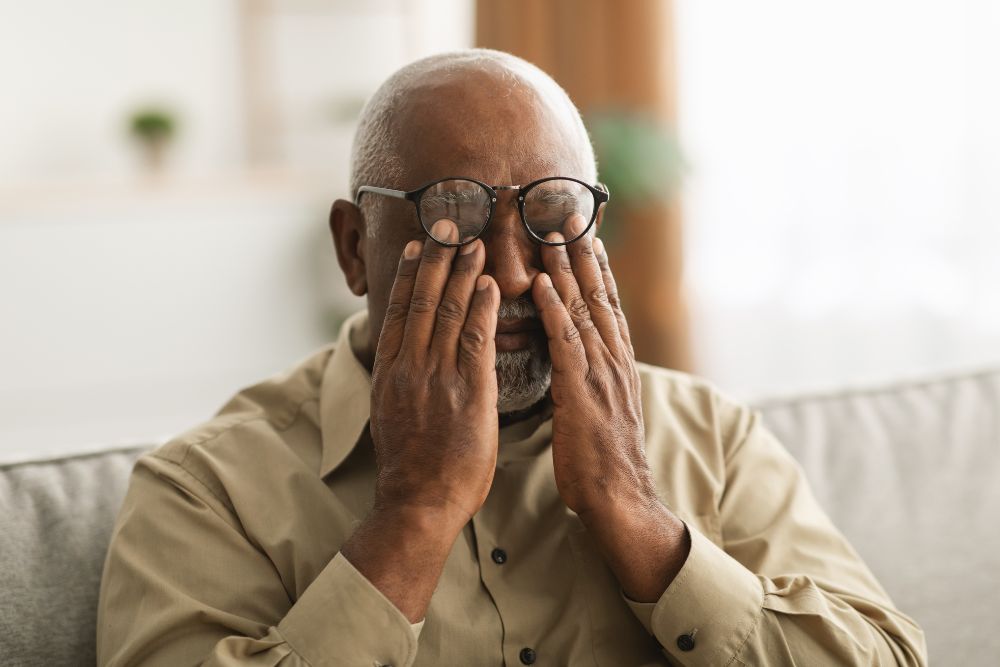Living with Geographic Atrophy: Coping Strategies and Treatment

Originally published by Retina Group of Florida
If you're 60 years or older, you may be familiar with age-related macular degeneration (AMD), a prevalent concern among older adults. AMD, a leading cause of irreversible blindness, can take a further degenerative turn, leading to a condition known as geographic atrophy. This condition affects an estimated 8 million people worldwide, constituting approximately 20% of all AMD-related cases. In this article, we'll explore the challenges posed by geographic atrophy and discuss effective coping strategies and treatments.
Geographic Atrophy, the Endpoint of Dry AMD
AMD comes in two different forms: dry and wet. Dry AMD is characterized by the gradual deterioration of the macula, the central part of the retina, and bears a heavy correlation with the formation of drusen (i.e., yellowish deposits of cellular debris that build up under the retina). Wet AMD, on the other hand, is characterized by the formation of abnormal blood vessels in the eye.
Geographic atrophy represents the most advanced, severe stage of dry AMD. With this condition, lesions of cellular decay develop first on the retinal pigment epithelium (RPE). The RPE is a pigmented outer layer of the retina and is responsible for various retinal metabolic functions, as well as the absorption of stray light. As the lesions from geographic atrophy expand and potentially merge, their impact can extend to the fovea, the very center of the macula that’s responsible for most of our central vision. By causing damage to the RPE and fovea, geographic atrophy has a profoundly impairing impact on vision, leading to significant loss of clarity and detail in central vision.
Coping Strategies for Living with Geographic Atrophy
While geographic atrophy has a significant impact on vision, there is a wide range of coping strategies and resources available that can help patients navigate the challenges of daily life. Some of these include:
- Using adaptive devices, such as magnifiers, large-print materials, and adaptive technology, to support daily activities like reading and writing
- Optimizing lighting conditions by ensuring well-lit environments and minimizing glare and shadow
- Implementing organizational systems at home, such as labeled containers and tactile markers, to facilitate independent navigation and accessibility
- Using visual aids like bold contrast colors, high-contrast fonts, and larger fonts on electronic devices
- Scheduling regular check-ups with a retina specialist to monitor changes in vision and receive timely advice
- Exploring leisure activities that can be adapted to accommodate visual impairments, such as audiobooks, podcasts, or tactile hobbies
- If necessary, using mobility aids such as canes or guide dogs
- Exploring smartphone apps designed to assist individuals with visual impairments, offering features like voice commands, magnification, and navigation assistance.
Coping strategies can vary from person to person, so find whatever works best for your individual needs and preferences. It’s also strongly recommended that you consult with a retina specialist who can provide personalized guidance on managing life with geographic atrophy.
An Effective Geographic Treatment Arrives
For geographic atrophy patients, 2023 was a momentous year, as two new medications were approved by the US Food and Drug Administration (FDA): SYFOVRE® in February 2023 and IZERVAY™ in August 2023. Before these medications were approved, there was no treatment course for geographic atrophy, making this one of the most important breakthroughs in vision healthcare history. Both medications are injected directly into the eye and work by inhibiting the complement cascade, a part of the immune system that is thought to play a role in geographic atrophy.
Take Control of Your Vision: Schedule a Geographic Atrophy Exam
Navigating life with geographic atrophy demands a proactive approach that involves embracing adaptive strategies, connecting with a retina specialist, and exploring the latest treatment options. For personalized guidance and treatment for geographic atrophy in Florida, connect with Retina Group of Florida.